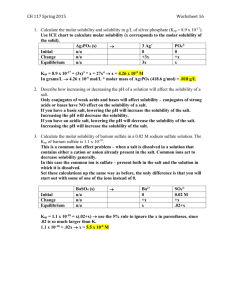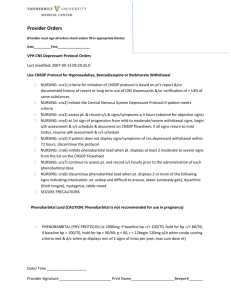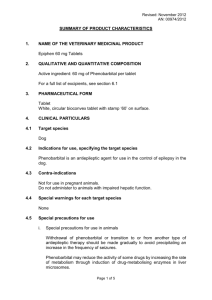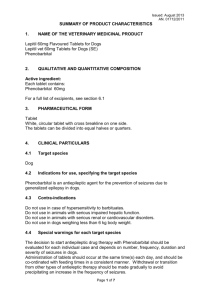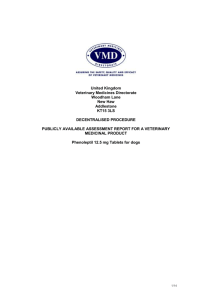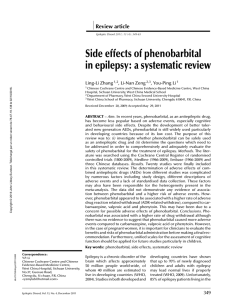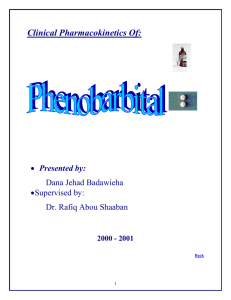Calculating the solubility of weak electrolytes influenced by pH The
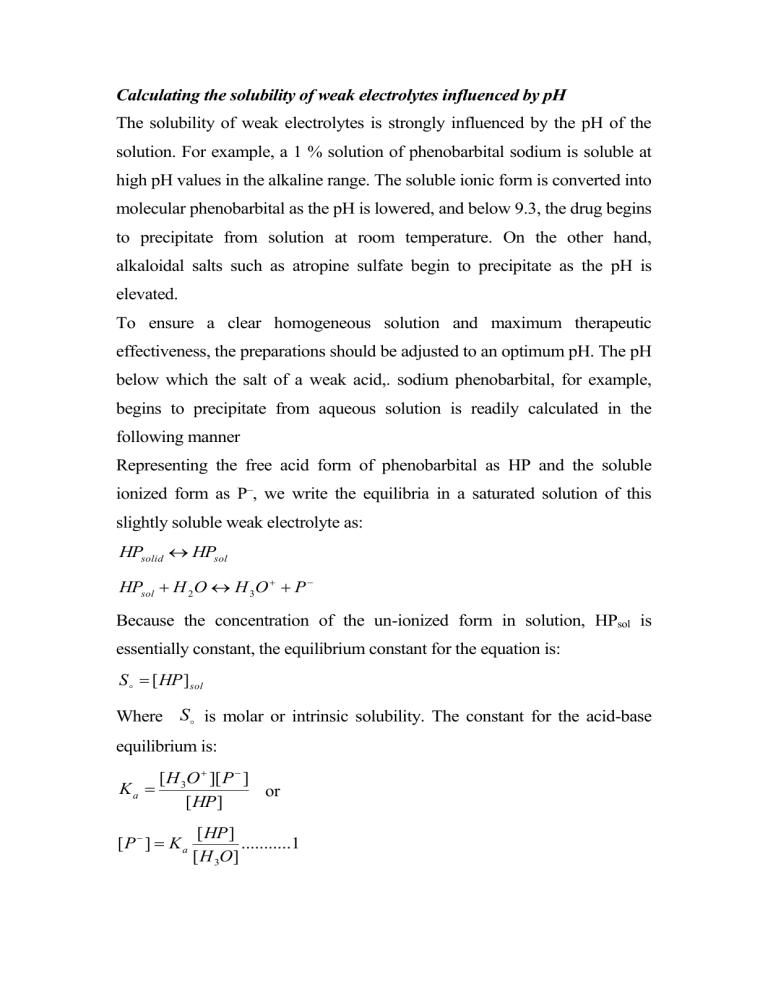
Calculating the solubility of weak electrolytes influenced by pH
The solubility of weak electrolytes is strongly influenced by the pH of the solution. For example, a 1 % solution of phenobarbital sodium is soluble at high pH values in the alkaline range. The soluble ionic form is converted into molecular phenobarbital as the pH is lowered, and below 9.3, the drug begins to precipitate from solution at room temperature. On the other hand, alkaloidal salts such as atropine sulfate begin to precipitate as the pH is elevated.
To ensure a clear homogeneous solution and maximum therapeutic effectiveness, the preparations should be adjusted to an optimum pH. The pH below which the salt of a weak acid,. sodium phenobarbital, for example, begins to precipitate from aqueous solution is readily calculated in the following manner
Representing the free acid form of phenobarbital as HP and the soluble ionized form as P
–
, we write the equilibria in a saturated solution of this slightly soluble weak electrolyte as:
HP solid
HP sol
HP sol
H
2
O
H
3
O
P
Because the concentration of the un-ionized form in solution, HP sol
is essentially constant, the equilibrium constant for the equation is:
S
[ HP ] sol
Where S
is molar or intrinsic solubility. The constant for the acid-base equilibrium is:
K a
[ H
3
O
][ P
]
or
[ HP ]
[ P
]
K a
[ HP ]
[ H
3
O ]
..........
.
1
The total solubility, S of phenobarbital consists of the concentration of the undissociated acid, [HP], and that of the conjugate base or ionized form, [P
–
]:
S
[ HP ]
[ P
].........
....
2
Substituting S
for [HP] from equation ( 9-3) and the expression from equation ( 9-5 ) for [P
–
] yields:
S
S
K a
[ H
S
3
O
]
( S
S
)
K a
[ H
S
3
O
] log( S
S
)
log K a
log S
log[ H
3
O
] pH p
pK a
log
S
S
S
Where pH p
is the pH below which the drug separates from solution as the undissociated acid.
As seen from equation (9-9 ), pH p
depends on the initial molar concentration,
S, of salt added, the molar solubility of the undissociated acid, S
(also known as the intrinsic solubility ) and the pK a
.
An analogous derivation can be carried out to obtain the equation for the solubility of a weak base as a function of the pH of a solution. pH p
pK w
pK b
log
S
S
S
Where S is the concentration of the drug initially added as the salt and S
is the molar solubility of the free base in water. Here pH p
is the pH above which the drug begins to precipitate from solution as the free base.
Example: Below what pH will free phenobarbital begin to separate from a solution having an initial concentration of 1 g of sodium phenobarbital per
100 mL at 25°C ? The molar solubility, S
of phenobarbital is 0.005 and the
pK a
is 7.41 at 25°C. The secondary dissociation of Phenobarbital can be disregarded. The molecular weight of sodium phenobarbital is 254.
The molar concentration of salt initially added is:
1 gm
0 .
1 L
1 L
10 gm / Liter
Molarity
Weight
Molecular .
Weight
10
254
0 .
039 mole / Liter pH p
pK a
log
S
S
S
pH p
7 .
41
log
0 .
039
0 .
005
7 .
41
log 6 .
8
8 .
24
0 .
005



